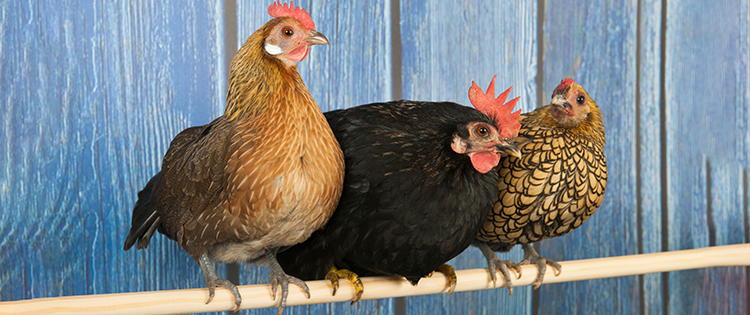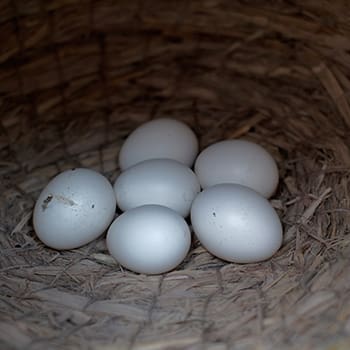Standard breeds like Buff Orpingtons and Spangled Sussex are all the rage in today’s backyard chicken world. Yet, there is a tiny group of little friends that seem to be being forgotten and I can’t imagine why that is. They produce eggs just as well as any other chicken and, even better, they’re even easier to keep! Friends, let’s take a look at the bantam breeds of chicken and why you should hatch a few yourself.
Less Feed
Since bantam chickens are smaller than standard breeds, they typically eat a good deal less feed. Better yet, this means not having to buy pellets; laying crumbles (which are usually much cheaper) are rarely wasted since they fit perfectly in these small birds’ mouths.
So, with a lower feed bill, you may be able to pocket a little more money from these birds.
Less Necessary Area for Coop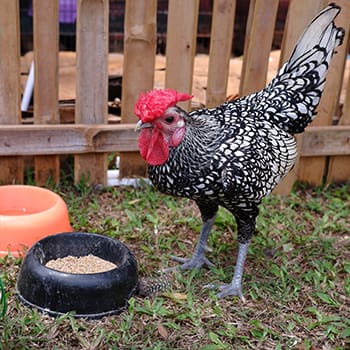
Perhaps you’re new to the poultry-keeping world and want to start small. Bantams are perfect for that! Not only will you be able to keep a few more birds in a typical coop (that you’d buy at Tractor Supply or a similar farm and garden store, perhaps even Petsmart or Petco these days), but you’ll be able to add to your flock if you decide you love poultry keeping.
The average necessary space in the coop for one standard breed chicken is 10 sq feet (ideally 12). The average needed for your new bantam chicken friends? Half! Just 5 sq feet per bird. This means all of those 2-3 chicken runs and pens will easily hold a little family of 4-5 bantams and allow you to really get your hands dirty.
I do note, of course, that all poultry does better with more room; the most possible. Remember that and you’ll never go wrong!
Ornamental Layers
There are no two thoughts about it: bantam chickens are just downright pretty. They come in a huge array of colors and patterns, feathered feet and clean feet, and so many other types that you’ll never run out of new breeds and varieties to try out. I did mention eggs, and I’ll get into that a good bit more two sections down from here.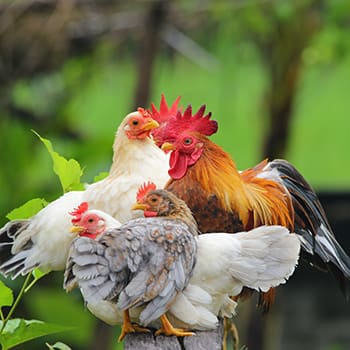
Bantams do lay, but they aren’t as valued for their eggs as standard breeds are in terms of eating. They are, however, heavily valued for their feathers. There’s no reason to go and pluck your bantams, either. Chickens go through a seasonal shedding process called “molt” twice a year when they’ll drop all of their feathers and allow you to harvest, clean, and store them for craft addicts just looking for a curly Frizzle feather or three.
The Next Step Up in Difficulty
If you’ve had standard chickens for a little while, it’s time to expand and try something new.
I won’t sit here and tell you that bantam breeds are just as hardy or easy to rear from chicks as standard breed chickens are. That would be lying and I don’t do that around here. No, bantams are the next step up in difficulty in poultry.
If you’re interested, in the future, at trying your hand with game fowl or ducks, or perhaps something exotic such as swans, bantams are a good way to get used to a problem chick or two popping up. Whether they’ve gotten shrink-wrapped in an egg while trying to hatch (and you have to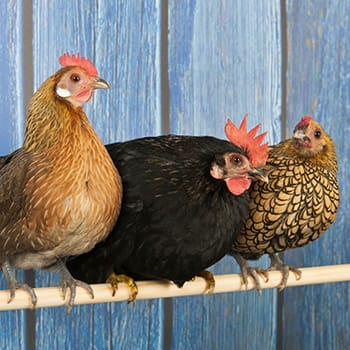 learn whether or not it’s time to help; which just comes with practice) or they’re having leg issues soon after being born, you’ll learn some very important lessons with bantams and how to fix these issues.
learn whether or not it’s time to help; which just comes with practice) or they’re having leg issues soon after being born, you’ll learn some very important lessons with bantams and how to fix these issues.
Related: These 9 Common Garden Plants Are Toxic To Chickens
The best part about this is that you’ll know for next time. The worst? Sometimes these fragile chicks pass no matter what you do and that is typical of every species of poultry out there. Whether it’s nature’s way of preventing a rough life due to medical problems we don’t understand (or can’t see), or you simply cannot save them all; bantams will teach you this hard part of poultry rearing, too.
However, they are still chickens and chickens are some of the hardiest poultry out there; it’s why so many people start their flock obsession with them! Just remember that you’re dealing with the next step up in your poultry experience; you’re learning, and sometimes that takes a little extra time.
Premium Eggs for Sales
I mentioned earlier that bantams aren’t always kept for their eggs as eating prizes. Well, you can certainly eat them. Your average bantam egg is either a small or a medium (depending on the breed) as we could class them at the grocery store. You’ll need 1.5-2 small or medium eggs to make your average grocery store large egg.
If you’re like me and you love yolks, that’s just an extra perk to keeping these charming little birds.
I’d rather, however, introduce you to the craft world. Bantam eggs are perfect to blow and decorate. These eggs are usually in between a guinea fowl egg and a chicken egg in terms of shell hardness, which makes it easier to blow them and a little better at staying together while you create your masterpiece.
Related: Vinegar+eggshells =?
This, then, allows you to sell these beautiful art pieces on various art sites and make some seriously impressive money once you get your name established in that world. It may take a little while, but it is certainly worth the investment of time and effort. Some blown eggs have sold as high as $500 each on sites like Etsy.
You may also choose to try to sell these eggs to the general public (or restaurants) as a fancier egg, perhaps competing with quail eggs. They often sell very well in such a vector and encourage further sales because people just can’t get enough of these “mini” eggs.
Do you keep bantams? If so, let us know down below. We’d love to find out which bantam breeds or bantam types you’re interested in! And, as always, happy farming!
You may also like:
Top 6 Best Egg-Laying Chicken Breeds
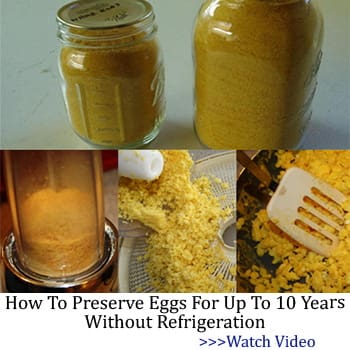
How to Butcher Game and Livestock (Video)
Chicken Friendly Plants To Have In Your Homestead
Ingenious Ideas For Taking Care Of Your Chickens
Build Your Chicken Coop With $50 In One Hour
10 Common Mistakes You Should Avoid If You Want To Raise Chickens
